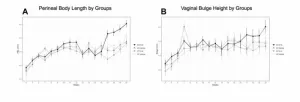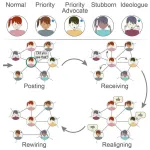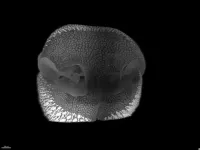(Press-News.org) A new artificial intelligence-based system can accurately assess the chromosomal status of in vitro-fertilized (IVF) embryos using only time-lapse video images of the embryos and maternal age, according to a study from investigators at Weill Cornell Medicine.
The new system, called "BELA,” and described in a paper published Sept. 5 in Nature Communications, is the team’s latest AI-based platform for assessing whether an embryo has a normal (euploid) or abnormal (aneuploid) number of chromosomes—a key determinant of IVF success. Unlike prior AI-based approaches, BELA does not need to consider embryologists' subjective assessments of embryos. It thus offers an objective, generalizable measure and, if its utility is confirmed in clinical trials, could someday be used widely in embryology clinics to improve the efficiency of the IVF process.
“This is a fully automated and more objective approach compared to prior approaches, and the larger amount of image data it uses can generate greater predictive power,” said study senior author Dr. Iman Hajirasouliha, associate professor of physiology and biophysics and a member of the Englander Institute for Precision Medicine at Weill Cornell Medicine.
The study's first author was Suraj Rajendran, a doctoral student in Dr. Hajirasouliha's laboratory. The embryology work for the study was headed by Dr. Nikica Zaninovic, associate professor of embryology in clinical obstetrics and gynecology and director of the Embryology Laboratory at the Ronald O. Perelman and Claudia Cohen Center for Reproductive Medicine (CRM) at Weill Cornell Medicine and NewYork-Presbyterian/Weill Cornell Medical Center. Dr. Zev Rosenwaks, director and physician-in-chief of the CRM and the Revlon Distinguished Professor of Reproductive Medicine in Obstetrics and Gynecology at Weill Cornell Medicine, co-authored the study.
Embryologists typically assess an IVF embryo's quality by examining it under a microscope. If it looks relatively normal but there are reasons to suspect possible problems, such as in cases of advanced maternal age, they may test its chromosomal status more directly. The “gold standard” test is a somewhat risky, biopsy-like procedure called preimplantation genetic testing for aneuploidy (PGT-A). In recent years, embryologists have been teaming up with computer/AI experts to find ways to automate some of this workflow and improve outcomes. In a 2022 study, Dr. Hajirasouliha and colleagues developed an AI-based system called STORK-A, which uses a single microscopic image of an embryo, plus maternal age and embryologists’ scoring, to predict the embryo’s ploidy status with about 70 percent accuracy.
The researchers developed BELA to generate accurate ploidy prediction independently of embryologists’ assessments. The heart of the system is a machine-learning model that analyzes nine time-lapse video images of an embryo under a microscope in a key interval about five days after fertilization to generate an embryo quality score. The system then uses this score and maternal age to predict euploidy or aneuploidy.
The researchers trained the model on a Weill Cornell Medicine CRM deidentified dataset with image sequences of nearly 2,000 embryos and their PGT-A-tested ploidy status. They then tested the model on new Weill Cornell Medicine CRM datasets and those from separate, large IVF clinics in Florida and Spain. They found that the model predicted ploidy status with moderately higher accuracy than previous versions and worked well for the external and internal datasets.
The next step, the researchers say, is to test BELA’s predictive power prospectively in a randomized, controlled clinical trial, which they are currently planning.
“BELA and AI models like it could expand the availability of IVF to areas that don’t have access to high-end IVF technology and PGT testing, improving equity in IVF care across the world,” Dr. Zaninovic said.
The fact that BELA is set up to process a vast amount of image data for each embryo also suggests to the researchers that it could be used for more than ploidy prediction.
“Our hope is that this model could be useful also for general embryo quality estimation, prediction of the embryo development stage, and other functions that an embryology clinic could tailor for its own needs,” Rajendran said.
Many Weill Cornell Medicine physicians and scientists maintain relationships and collaborate with external organizations to foster scientific innovation and provide expert guidance. The institution makes these disclosures public to ensure transparency. For this information, see profiles for Dr. Iman Hajirasouliha and Dr. Nikica Zaninovic.
The research reported in this story was supported in part by the National Institute of General Medical Sciences, part of the National Institutes of Health, through grant number R35GM138152.
END
A fully automated AI-based system for assessing IVF embryo quality
2024-10-22
ELSE PRESS RELEASES FROM THIS DATE:
Senolytics dasatinib and quercetin for prevention of pelvic organ prolapse in mice
2024-10-22
“This study represents one of the first to evaluate the impact of senolytic agents D+Q on the clinical development of pelvic organ prolapse and expression of proteins associated with cellular senescence in a mouse model.”
BUFFALO, NY- October 22, 2024 – A new research paper was published in Aging (listed by MEDLINE/PubMed as "Aging (Albany NY)" and "Aging-US" by Web of Science), Volume 16, Issue 19 on September 26, 2024, entitled, “Use of the senolytics dasatinib and quercetin for prevention of pelvic organ prolapse in a mouse animal model.”
Pelvic organ prolapse is a common condition among women ...
UCLA efforts to provide prostate cancer treatment in the community gets $6 million boost
2024-10-22
The UCLA Urology department has been awarded $6 million from the California Department of Health Care Services to continue providing vital care and critical services to underinsured and uninsured Californians diagnosed with prostate cancer.
For the next two years, the additional funding will support the 23-year-old IMPACT program—which stands for Improving Access, Counseling, and Treatment for Californians with Prostate Cancer—and extend the program’s reach and duration, ensuring continued support for California’s most vulnerable populations.
Led ...
Study asks: Can cell phone signals help land a plane?
2024-10-22
ALBUQUERQUE, N.M. — Dangling from a weather balloon 80,000 feet above New Mexico, a pair of antennas sticks out from a Styrofoam cooler. From that height, the blackness of space presses against Earth’s blue skies. But the antennas are not captivated by the breathtaking view. Instead, they listen for signals that could make air travel safer.
Researchers from Sandia National Laboratories and Ohio State University are taking experimental navigation technology to the skies, pioneering a backup system to keep an airplane on course when it cannot rely on global positioning system satellites.
More than 15 miles below the floating cooler, cell phone ...
Artificial intelligence is creating a new way of thinking, an external thought process outside of our minds
2024-10-22
The interaction between humans and artificial intelligence is shaping a new thinking system, a new cognitive scheme, external to the human mind, but capable of enhancing its cognitive abilities. This is called System 0, which operates alongside the two models of human thought: System 1, characterized by intuitive, fast, and automatic thinking, and System 2, a more analytical and reflective type of thinking. However, System 0 introduces an additional level of complexity, radically altering the cognitive landscape in which ...
Reaction conditions tune catalytic selectivity
2024-10-22
UPTON, N.Y. — Chemists at the U.S. Department of Energy’s (DOE) Brookhaven National Laboratory have developed a new theoretical framework for more accurately predicting the behavior of catalysts. These collections of atoms lower the energy needed for countless chemical reactions. The study reveals how conditions such as temperature and pressure can change a catalyst’s structure, efficiency, and even the products it makes. The findings are published in the journal Chem Catalysis.
“Our results highlight the significant impact ...
Verified users on social media networks drive polarization and the formation of echo chambers
2024-10-22
When X (formerly Twitter) changed its verification system in 2022, many foresaw its potential to impact the spread of political opinions on the platform. In a modeling study publishing October 22 in the Cell Press journal iScience, researchers show that having verified users whose posts are prioritized by the platform’s algorithms can result in increased polarization and trigger the formation of echo chambers. Because X’s new verification system allows almost anybody to become verified, this side effect could be taken advantage of by users wishing to manipulate others’ opinions, the researchers say.
“Our findings confirm ...
Get a grip: The best thumb position for disc launch speed and spin rate
2024-10-22
WASHINGTON, Oct. 22, 2024 – Disc golf is a sport growing in popularity, but there hasn’t been much research into the best techniques – until now.
Researcher Zachary Lindsey and his team studied professional and amateur disc golf players in Georgia to analyze the effect of thumb grip on disc-throwing.
“Participants were eager and excited to engage in the study, as there is clearly a thirst for scientific evidence and data to drive progress in the sport so that disc golf enthusiasts can improve their game in recreational and competitive contexts,” ...
Maternal eating disorders, BMI, and offspring psychiatric diagnoses
2024-10-22
About The Study: In this population-based cohort study including 392,000 mothers and 649,000 offspring, offspring from mothers with an eating disorder history or pre-pregnancy body mass index (BMI) outside normal weight were at higher risk of psychiatric disorders. The results differed somewhat between the 2 exposures with regard to which offspring diagnoses had associations, and effect sizes were typically larger for maternal eating disorders vs BMI. These findings suggest a need to consider these 2 exposures clinically to help prevent offspring mental illness.
Corresponding Author: To contact the corresponding author, Ida A. K. Nilsson, PhD, email ida.nilsson@ki.se.
To ...
Geometric mechanics shape the dog's nose
2024-10-22
The noses of many mammals, such as dogs, ferrets and cows, feature grooves forming a multitude of polygons. A team from the University of Geneva (UNIGE) has analyzed in detail how these patterns form in the embryo using 3D imaging techniques and computer simulations. The researchers discovered that differential growth of the skin tissue layers leads to the formation of domes, which are mechanically supported by the underlying blood vessels. This work describes for the first time this morphogenetic process, which could help explain the formation of other biological structures ...
‘Visual clutter’ alters information flow in the brain
2024-10-22
New Haven, Conn. — Whether we’re staring at our phones, the page of a book, or the person across the table, the objects of our focus never stand in isolation; there are always other objects or people in our field of vision. How that visual “clutter” affects visual processing in the brain, however, is not well understood.
In a new study published Oct. 22 in the journal Neuron, Yale researchers show that this clutter alters how information flows in the brain, as does the precise location of that clutter within the wider field of vision. The findings ...





